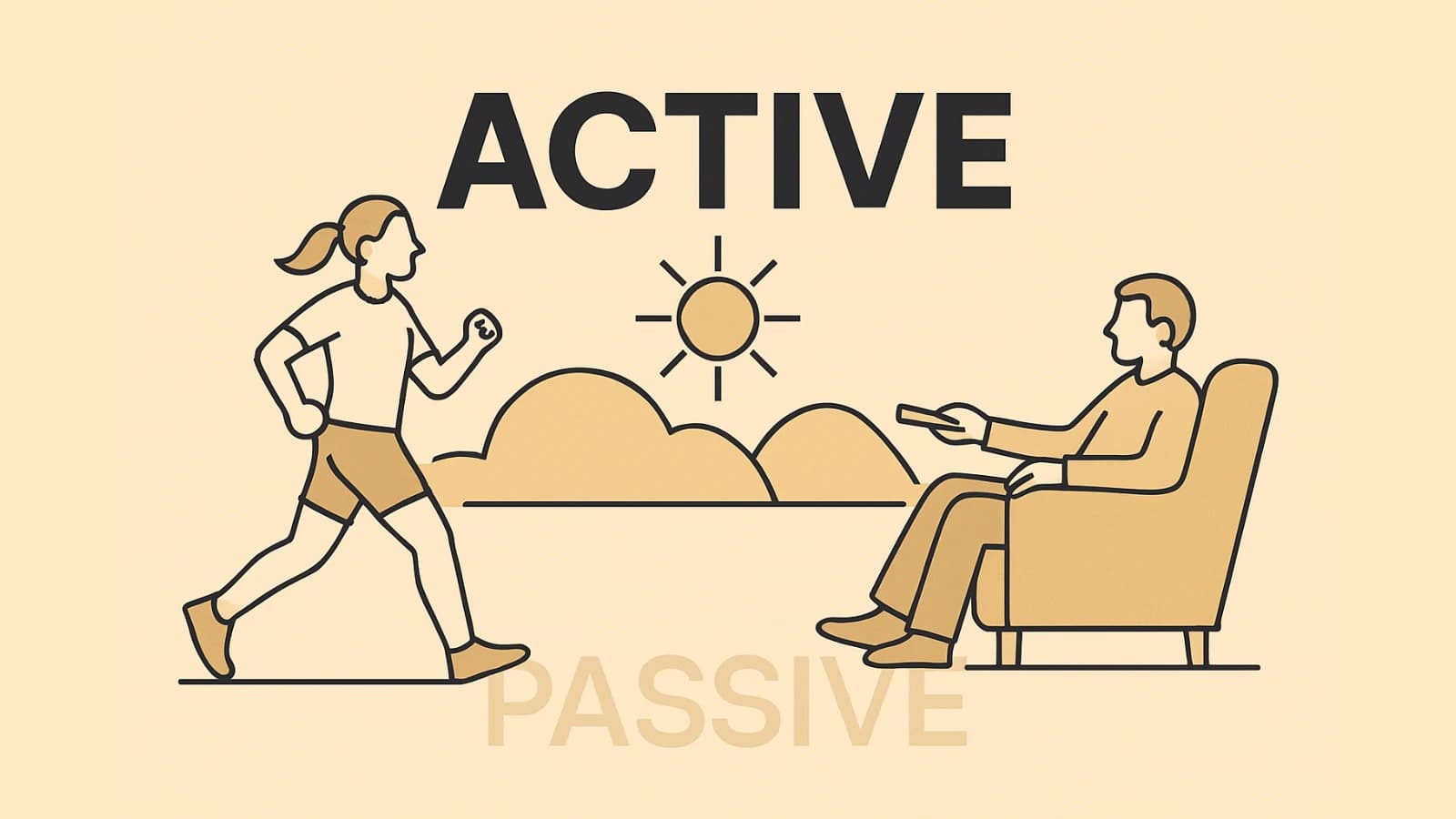Active Voice vs Passive Voice: Why Your Characters Need to Take Action

If you've spent any time in writing circles, you've probably heard the advice: "Use active voice, not passive voice." It's one of those writing rules that gets thrown around constantly, but what does it actually mean? And more importantly, why should you care?
Let's break down this fundamental writing concept and explore why mastering active voice can transform your writing into page-turning fiction.
What Active Voice Actually Means
Active voice is deceptively simple: your character (or subject) performs the action in the sentence. They're the ones doing something.
For example:
- Sarah kicked the door open.
- The detective discovered the hidden evidence.
- Marcus slayed the dragon.
In each case, we know exactly who's doing what. There's no confusion about agency or responsibility. The subject is the doer.
Passive voice flips this relationship. Instead of the character performing the action, the action happens to them or around them. The subject receives the action rather than performs it.
Passive voice examples:
- The door was kicked open by Sarah.
- The hidden evidence was discovered by the detective.
- The dragon was slain by Marcus.
Notice how these sentences feel more distant? In the first example, you first hear of the door, then that it was kicked, and only then that Sarah was there. The problem is that readers need to reconstruct the sentence in their imagination after they learn Sarah was the one kicking. It takes more words to convey the same meaning, it's harder for readers to follow, and it creates distance between writing and reader.
Why Active Voice Matters for Fiction Writers
Active voice isn't just about grammar; it's about impact. As mentioned, for fiction, it’s a powerful tool that directly influences how readers experience your story.
Character Agency Creates Investment
When readers stay up until 3 AM furiously flipping pages, they're rarely doing it for beautiful prose or clever metaphors. It's because they're desperate to know what happens to a character they care about.
Active voice puts your characters in the driver's seat. It shows them making choices, taking risks, and facing consequences head-on. This creates what psychologists call "agency"—the sense that your character has control over their destiny.
Compare these two sentences:
- Passive: "The letter was found by Emma in her grandmother's attic."
- Active: "Emma found the letter hidden in her grandmother's attic."
The active version makes Emma the discoverer. She's actively searching, uncovering secrets. The passive version makes her seem like she stumbled onto something by accident, diminishing her role in the discovery. Readers connect with characters who act, not those to whom things happen to happen.
Momentum Keeps Pages Turning
Active voice creates forward momentum. It propels your story along because someone is always doing something.
This momentum is crucial for pacing. Passive voice tends to slow things down because it adds extra words and creates distance between the action and the character performing it. It can make your prose feel sluggish and less immediate.
- Passive (sluggish): "The villain's plan was uncovered by the team after weeks of investigation."
- Active (dynamic): "The team uncovered the villain's plan after weeks of investigation."
The active version cuts two words and puts the team front and center as the heroes of their own story, immediately engaging the reader in their actions.
Clarity and Conciseness
Beyond engagement, active voice generally leads to clearer and more concise writing. By directly stating who is doing what, you eliminate ambiguity and tighten your sentences. Every word earns its place.
Consider:
- Passive: "It was decided by the council that the old laws would be repealed."
- Active: "The council decided to repeal the old laws."
The active version is not only shorter but also more direct. There’s no question about who made the decision.

Red Flags to Watch Out For
Training your eye to spot passive voice is key. Here are some common indicators:
The "Was/Were + Past Participle" Construction
This is the most common passive voice pattern. Look for sentences that follow this structure:
- "The message was delivered..."
- "The door was opened..."
- "The secret was kept..."
Not every "was/were + verb" construction is passive voice (e.g., "She was happy" uses a linking verb), but it's worth examining each one to see if you can make it more active.
Here's the classic rule: If you can add "by zombies" to the end and it still makes sense, it's likely passive. For example, "The message was delivered (by zombies)."
Vague Subject Responsibility
Passive voice often hides who's actually responsible for the action. This can be problematic in fiction where clarity and character motivation are paramount:
- "Mistakes were made." (By whom?)
- "The report was filed." (Who filed it?)
- "A decision was reached." (Who decided?)
This vagueness might work in political speeches or corporate memos, but it kills tension and engagement in fiction, leaving your readers wondering who is actually driving the narrative.
Overuse of "By" Phrases
If you find yourself writing a lot of sentences that end with "by [character name]," you're probably stuck in passive voice territory. The phrase is a dead giveaway that the action is being performed by someone, rather than the subject doing the action.
When to Break the Rules
Like all writing advice, the "always use active voice" rule has exceptions. Sometimes passive voice serves a specific, intentional purpose, and knowing when to use it effectively is a mark of a skilled writer.
When the Action Matters More Than the Actor
Sometimes, the event itself is more significant than who performed it, or the actor is unknown or irrelevant.
- "The president was assassinated" focuses on the shocking event rather than the assassin, especially if the assassin's identity is not yet known or is secondary to the impact of the event.
- "Penicillin was discovered in 1928 by Alexander Fleming." Here, the focus is on the discovery, not the discoverer.
When You Want to Hide Information or Create Mystery
Passive voice can be a powerful tool for building suspense or keeping information from the reader, especially about the agent of an action.
- "The evidence was destroyed." This creates mystery about who destroyed it, leading the reader to wonder.
- "A strange note had been left on her pillow." The mystery isn't who left it, but that it was left at all.
When the Subject is Unknown or Unimportant
If the person or thing performing the action is irrelevant to your story, passive voice can be appropriate.
- "The building was constructed in 1847." The specific builders aren't relevant to your story; the age of the building is.
- "My car was stolen last night." The focus is on the loss of the car, not the identity of the thief (who is unknown to the speaker).
Let Technology Help
It can be challenging to identify every instance of passive voice, especially in a long manuscript. Don’t go it alone. Tools like Inkshift can analyze your manuscript and highlight passive phrases that you overuse or that slow down your writing. It also highlights things like character motivations and consistency, plot holes, prose quality and more, and it's free to try on up to 10,000 words.
If you're interested in more tools that can help improve your writing, check out our blog article on the top tech tools for writers in 2025
The Bottom Line
Active voice won't magically transform your writing, but it's a powerful tool for creating engaging, character-driven fiction. It puts your protagonists in charge of their own stories and gives readers someone to root for. It makes your prose clearer, more direct, and more dynamic.
After all, readers don't want to watch things happen to your characters. They want to watch your characters make things happen. Good luck!

